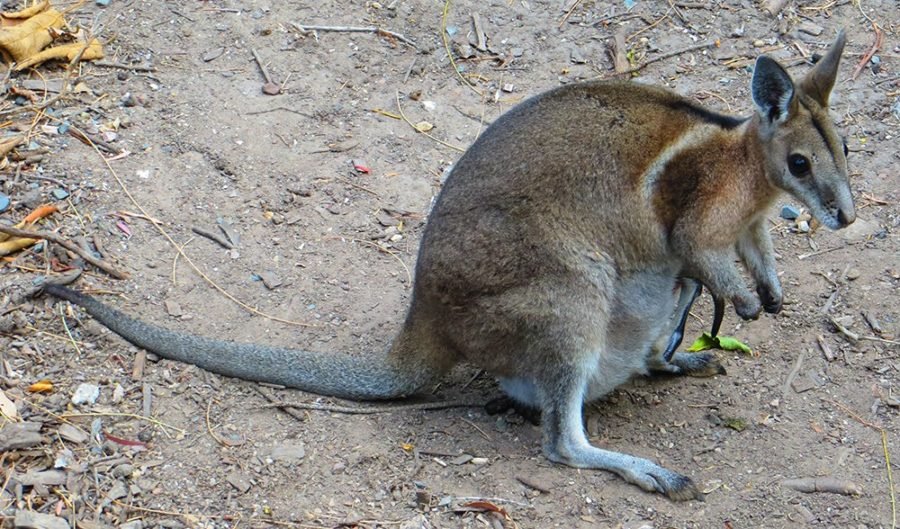Meet the wallaby that was saved by Woman’s Day Magazine

ITS A REMARKABLE tale. The bridled nailtail wallaby was once abundant across a large area of inland eastern Australia. But — as with many medium-sized marsupials — populations plummeted after European colonisation and the introduction of feral predators. By the 1930s it had disappeared, with the last animal spotted in 1937 — yet another extinction for the records.
That was until 1973, when a fencing contractor working on a property about to be cleared for cattle near the outback town of Dingo, Queensland, noticed an unusual wallaby. His wife matched the description to an article on extinct species in Woman’s Day magazine. The family got in touch with the authorities. By 1978 the Queensland Government bought the property to protect the few hundred wallabies that remained, and it became part of Taunton National Park.
See more: Meet the tiniest rock-wallaby on earth
Nailtails are distinctive because of the bridle-like white stripes that run across their shoulders and the 3-6mm-long, nail-like spur found at the tip of their tails (these may have a function in helping the wallabies make sharp turns at high speed, by giving them a point on the ground to pivot on, but experts aren’t sure). They also exhibit a puzzling strategy of attempting to hide by lying prone on the ground, rather than fleeing at high speed as most kangaroos and wallabies do. This no doubt contributed to their decline, as it is not an effective way to avoid being eaten by foxes and cats.
Since 1993, nailtails have been introduced to three other properties: Idalia National Park and Avocet Nature Reserve, both in Queensland, and the Australian Wildlife Conservancy’s Scotia Sanctuary near Broken Hill in NSW. The wild population at Taunton, however, has the highest genetic diversity, and here feral cats and wild dogs are still significant threats. To protect the wallabies, cat numbers have to be controlled.
Nailtail numbers at Taunton took a dive in the early ’90s following prolonged severe drought. Their numbers remained low even during good seasons and despite ongoing baiting programs. In 2007 the core population was estimated to number about 70. Feral cats and wild dogs were becoming a major problem, and cat numbers in particular exploded in 2012 following several years of above-average rain and the return of boom times to the outback.
See more: The rock-wallaby with a purple neck
The Queensland Parks and Wildlife Service kicked into action with a series of methods to eliminate the threat. “Rangers and conserva-tion officers at Taunton have been experimenting with new forms of cat traps and thermal imaging gear to ensure a secure future for the species,” says principal conservation officer Dr Graham Hemson. “We use thermal cameras to survey nailtails and remote infrared cameras to monitor both predators and nailtails.”
With the use of thermal cameras, new traps and an intensified trapping and shooting program, they were able to remove 20 cats in 2013 and another 34 in 2014. Baiting for wild dogs and working with neighbouring landhold-ers to establish corridors of native vegetation are also helping to secure the long-term future of the last wild, free-ranging population.
“Cat eradic tion is not possible at Taunton, but our intention is to continu- ally remove feral cats so their numbers don’t build up and nailtails don’t become their preferred prey,” Graham adds. He argues that the coordinated efforts are paying dividends, and the wallaby population at Taunton is recovering. A late 2014 survey revealed a population of 150-250 animals, including a large number of juveniles, so with hard work it has been brought back from the brink.
Across all four populations, bridled nailtails are now thought to number more than 3000 and for that we owe a debt of thanks to a Woman’s Day reader and her fencing-contractor husband back in 1973.
READ MORE:
- The wallaby that hopped across the Sydney Harbour Bridge
- Bennett’s wallabies get high on poppy seeds

